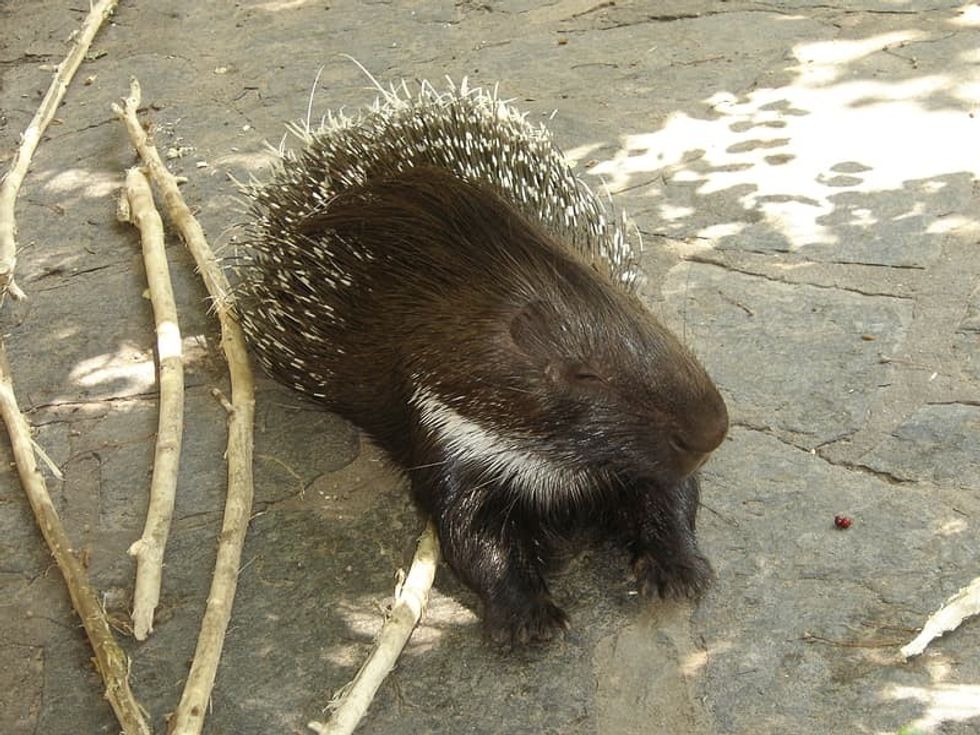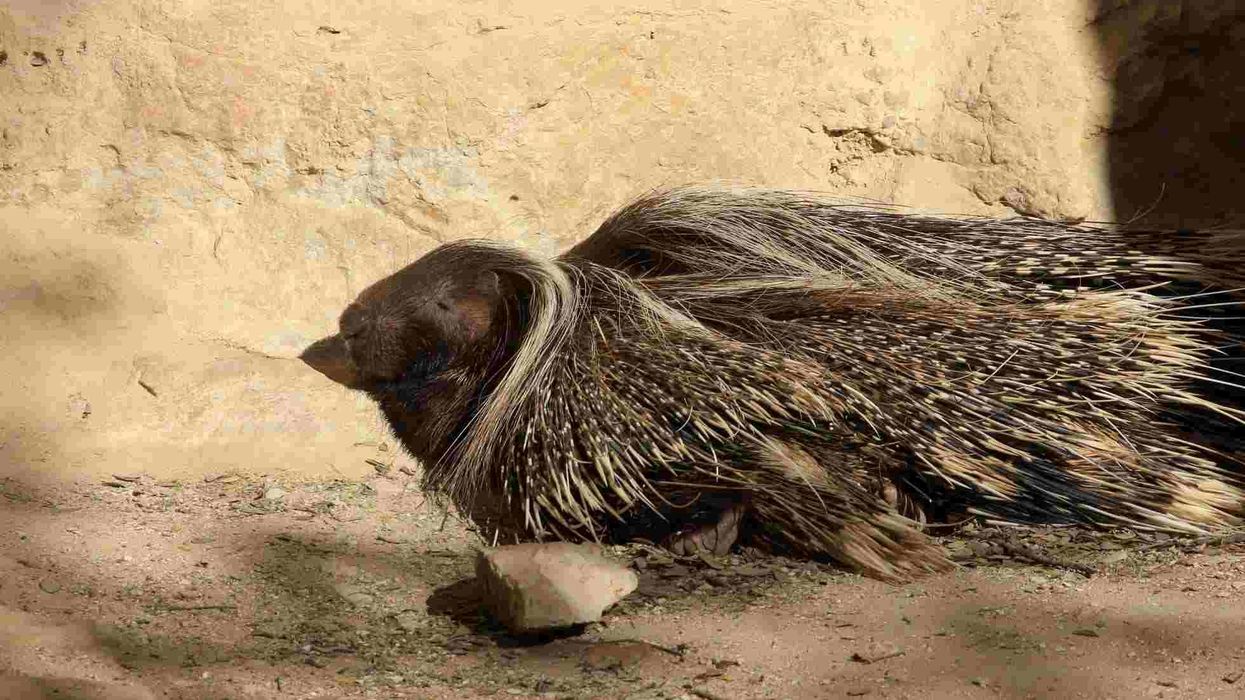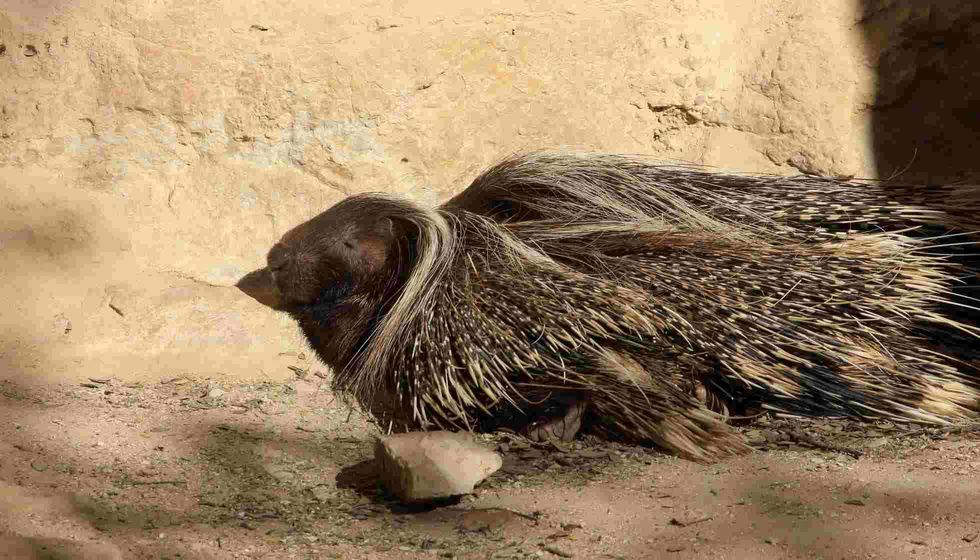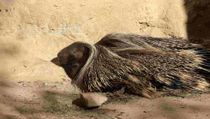Fun Porcupine Facts For Kids

Scientifically categorized into two groups (Old World and New World), the porcupines are the spiky members of Class Mammalia. New world porcupines are medium sized rodents, distantly related to the beavers and rats. Porcupine (erethizon dorsatum) constitute about the third largest species of rodent in the world.
A prickly bunch, new world porcupines are adorable and fierce looking at the same go. Despite their sharp edged look these are a species docile animal. Read along to discover some interesting porcupine quills facts about the North American porcupine.
Porcupine Interesting Facts
What type of animal is a porcupine?
Porcupine Hystrix is a group of rodents, characterized by the presence of a spiky coat on their body. These organisms are classified into two families; the Old World ( family Hystricidae) and the New Old (family Erethizontidae) of the Order Rodentia. Therefore these organisms are said to be distantly related to rats and beavers.
What class of animal does a porcupine belong to?
North American porcupine belongs to class mammalia, as two (beside other traits) of the very distinctive features of this class is prominently observed in these, that is, the presence of body hair modified in sharp quills and the presence of mammary glands for the nourishment of young ones.
How many porcupines are there in the world?
Porcupines constitute the third largest species of rodents in the world while the second largest in North-America. North American porcupines can be located along a wide area in the country.
Where does a porcupine live?
The porcupines are inhabitants of Asia, North South and Central-America, Europe, Eurasia. In fact the second largest population of these rodents are found in North-America.
What is a porcupine's habitat?
North American porcupine can be found in wild vegetations where they can peacefully hide out in the hollow structures. The crested porcupine is a common occupant of different terrain such as dense forests, mountains, deserts, dens in tree branches, rock crevices and grassland.
Who do porcupines live with?
In contrast to the common herd behavior of most herbivores and due in accordance to its defense features, North American porcupine generally prefer isolated and solitary existence in hollow structures to be safe from predators.
How long does a porcupine live?
The average lifespan of a North American porcupine is about 8-15 years when they live in the forests. When kept in captivity, the age span can increase considerably and they can live up to 25 years or more. They prefer to rest in hollow trees and crevices to stay safe from predators.
How do they reproduce?
The reproductive cycle in North American porcupine starts when these organisms come together during the breeding season. The female attracts a male with the help of its vocals and scent.
However, it is only the dominant males and females that mate, as they tend to fight and protect their territory. The average duration of breeding season usually extends from October to November. After the process of fertilization, the females undergo a gestation period of about 210 days and give birth to about one to two offspring, on an average.
What is their conservation status?
Since the family of porcupines includes a number of species, the population in total sums up to forming the third largest group of rodents. Most of the porcupines fall under the least concerned category in conservation status.
But there are certain species that require conservation efforts, such as Bristle-Spined porcupine, crested porcupine and Philippine porcupine as they are categorized under Vulnerable category of conservation status by IUCN.
Porcupine Fun Facts
What do porcupines look like?
Since a number of species are included under porcupines, different variations are observed among the group itself. However a number of characteristics are common to all the prickly bunch inhabitant on earth.
For instance these nocturnal animals are generally known to possess small heads on robust bodies.
In adaptation to mammalian characteristics, their body is covered with hair. However for survival in nature, these organisms have a well built defense mechanism in the form of thick and hard structures called quill which are essentially modified hairs.
Presence of quill is characteristic to all porcupines, hence their given name. However the distribution of quill varies amongst different species.
Wherein some species the quill is aligned around their tails, in others it is present as a vertical segment running down from their head or neck, while in some species of porcupines the entire body surface is a unproportionable combination of hair and quill.
Porcupines come in a number of color tones and patterns such as grayish brown, black, yellow or brown with a base layer in orange, white, black or yellow shades.
In fact a certain number of albino porcupines have also been observed in some definite parts of the World.
A number of porcupines species possess sole without hair contributing to their excellent climbing activities. The average length of tail in Porcupines is about 8-12 in

How do they communicate?
Grunting, whining and screeching are different ways in which the porcupines communicate amongst themselves.
How big is a porcupine?
The largest porcupine that is Hystrix Cristata, happens to be about 36 in (90 cm) tall whereas the smallest Sphiggurus Insidiosus, is about as big as 15 in (38 cm). The range of height varies with species, however on an average most of them are about 25–36 in long.
How fast can a porcupine run?
The porcupines are slow animals moving at an average speed of about six mph.
How much does a porcupine weigh?
The average weight of porcupines is about 12–35 lb however the weight differs depending on the species.
What are their male and female names of the species?
The derivation of the name of these organisms can be traced to different languages. Where in Latin the names mean “quill pig”; according to French translation it means, ‘spiny pig’. The male members of this family are called boars, while the female porcupines are called sows.
What would you call a baby porcupine?
The baby porcupines are called porcupettes. At the juvenile stage of their life, these organisms have soft quills which harden with age. These quills are actually hardened hair and work as a great defensive mechanism against predators.
What do they eat?
Porcupines are herbivorous animals; that is organisms that survive on plant based diet. Their diet comprises roots, leaves, berries, twigs, green plants like skunk cabbage, bark and clover.
Are they dangerous?
Generally, these are a group of docile animals that prefer to live in isolation, in case of perceiving danger they instantly use their defense mechanism. The quills of these organisms can get lodged in the skin and are quite painful to remove.
Would they make a good pet?
It is not recommended to keep a porcupine as a pet because the quills, if pricked, can cause a lot of pain. But if you have some experience with porcupines, you can certainly keep them as pets but remember to take care of their diet.
Did you know...
As much as 30,000 quills have been reported on the bodies of certain porcupine species. In the past, the quills of porcupines were used as adornment by the Native Americans.
The quills of porcupines are known to possess a layer of antibiotic fatty acid or greasy layer that helps in preventing and healing infection. The notion that porcupines shoot out their quills is a myth. These species do not fling out their quills.
The juvenile porcupines leave behind their family to start living a solitary life, after about a couple of months from their birth.
Porcupines have well-adapted olfactory receptors, contributing to a brilliant sense of smell. However, the sense of vision is quite poor in these organisms.
Old World porcupines are fantastic swimmers, however, they are shabby climbers.
What are porcupine quills made of?
Amongst their numerous characteristics, the presence of body hair is one of the defining and distinctive traits of the members of Class Mammalia. The organisms belonging to this group are known to possess hair that is modified to perform various functions like camouflage, sensing, insulation, and defense.
These spikes look a bit like wood and logs, and used to defend an attacker. Hair also comes in several modified forms and structures, among different species of this class.
One such form of body hair found in the spiky members is quills. Quills are basically the modifications of hair and a distinctive attribute of the porcupines.
These are thick, hard and enlarged structures covering the body of porcupines in different proportions.
Keratin, a fibrous protein that is usually the basic component of hair along with structures like fingernails, horn, and claws are also the forming components of these structures. In addition to keratin, fatty acids are also an important component (as it helps in healing) of porcupine's quill.
In porcupines, the quill is a tube like hard structure of keratin with pointed ends or tips. Beside the basic structure, the quills are highly variable in terms of shape, function and size.
How to remove porcupine quills?
It is a myth that the porcupines can shoot out their quills, which are as sharp as needles. In fact, the release mechanism in these species is dependent on the connective tissue surrounding the follicle of the quill.
However what should be done in case of a close call with the quill of these animals. It is quite common for dogs, humans or any other pet to get pricked with these structures when around porcupines.
Following a particular procedure one can get rid of them at home (in case of extensive quill, consult medical help). For removing quills use pliers to grip (it should be firm) and gently pull out the spikes.
To lubricate the action, a combination of baking soda with vinegar can be used; apply the combination at the affected area for easy removal. It is also advisable to cut the ends of large quills to lessen the pressure.
Do not yank, quill should be removed as gently as possible as they are painful, if not poisonous. After the removal of the quill the affected region needs to be cleaned with antiseptic.
In case of severe damage it is advisable to seek medical help. Though the quills are not poisonous they are quite painful.
How to draw a porcupine?
Start by drawing the head in oval shape. Then, draw two circles in place of eyes, a nose and then draw a curved line for the mouth.
Now, you have to add two small ears towards the top of the head. Now, you have to add three small lines towards each side of the nose to represent the whiskers.
For making the body, draw a jagged pattern connecting the top of the body with the bottom of the body. To complete the drawing, add two front legs and two back legs.
Do porcupines bite?
Porcupines do and can bite if they feel threatened (and if you can get close enough). Although it is recommended you don't get too close while in their native habitat in case you get spiked!
These are wild animals in Africa and Mexico, among other places, and they should be left to do their own thing in their areas. From the predator that tries to hunt them, to porcupines giving birth, it's all a part of nature.
Here at Kidadl, we have carefully created lots of interesting family-friendly animal facts for everyone to discover! You can even occupy yourself at home by drawing one on our porcupine coloring pages.
We Want Your Photos!
More for You
Bachelor of Science specializing in Mass Communication.

Adekunle Olanrewaju JasonBachelor of Science specializing in Mass Communication.
Bachelor of Arts specializing in Political Science and Sociology

Spandana KantamBachelor of Arts specializing in Political Science and Sociology
Spandana holds a Bachelor's degree in Political Science from Acharya Nagarjuna University. She has a passion for writing and enjoys reading crime and thriller novels while listening to RnB music in her free time.
Disclaimer
1) Kidadl is independent and to make our service free to you the reader we are supported by advertising. We hope you love our recommendations for products and services! What we suggest is selected independently by the Kidadl team. If you purchase using the Buy Now button we may earn a small commission. This does not influence our choices. Prices are correct and items are available at the time the article was published but we cannot guarantee that on the time of reading. Please note that Kidadl is a participant in the Amazon Services LLC Associates Program, an affiliate advertising program designed to provide a means for sites to earn advertising fees by advertising and linking to Amazon. We also link to other websites, but are not responsible for their content.
2) At Kidadl, we strive to recommend the very best activities and events. We will always aim to give you accurate information at the date of publication - however, information does change, so it’s important you do your own research, double-check and make the decision that is right for your family. We recognise that not all activities and ideas are appropriate for all children and families or in all circumstances. Our recommended activities are based on age but these are a guide. We recommend that these ideas are used as inspiration, that ideas are undertaken with appropriate adult supervision, and that each adult uses their own discretion and knowledge of their children to consider the safety and suitability. Kidadl cannot accept liability for the execution of these ideas, and parental supervision is advised at all times, as safety is paramount. Anyone using the information provided by Kidadl does so at their own risk and we can not accept liability if things go wrong.
3) Because we are an educational resource, we have quotes and facts about a range of historical and modern figures. We do not endorse the actions of or rhetoric of all the people included in these collections, but we think they are important for growing minds to learn about under the guidance of parents or guardians.







